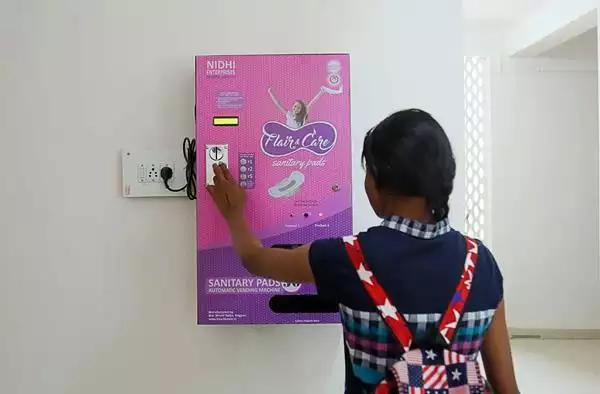Menstruation is a natural and essential biological process that women experience throughout their reproductive years. Along with this process comes the need for proper menstrual hygiene practices, including the disposal of sanitary pads. Improper disposal of sanitary pads can lead to various environmental and sanitation issues, including clogging of sewers, contamination of water bodies, and the spread of bacteria.
Today, I will be sharing the simple steps to dispose of Sanitary Pads.
Contents
How to Dispose Of Sanitary Pad?

When it comes to disposing of sanitary pads, it’s important to follow proper guidelines for hygiene and environmental reasons. Whether you find yourself at home, a friend’s house, or in a public setting, the process remains the same. Here are some simple steps to help you dispose of sanitary pads effectively:
- Wrap it up: After use, make sure to wrap the used sanitary pad in tissue or toilet paper. This helps contain any odor or leakage and keeps the pad secure.
- Find a dustbin: Locate the nearest waste bin or trash can. It’s essential to choose an appropriate disposal location to maintain cleanliness and prevent any discomfort for others who may come across it.
- Dispose Safely: Once you’ve wrapped the sanitary pad, carefully place it in the dustbin. Be mindful not to leave it exposed or hanging out of the bin, as this can create an unpleasant sight and potentially spread germs.
- Consider Discreet Options: In situations where you may not have immediate access to a proper disposal facility, it’s a good idea to carry small disposable bags or pouches that can seal in the used sanitary pad until you can safely dispose of it later. This ensures privacy and keeps odors under control.
Why Proper Disposal of Sanitary Pads is Important?
Environmental Impact
Improper disposal of sanitary pads can have a significant environmental impact. Most menstrual hygiene products are not biodegradable and can take hundreds of years to decompose. This leads to landfill accumulation and contributes to soil and water pollution. The plastic and synthetic materials used in sanitary pads can release harmful chemicals into the environment as they break down over time. This pollution can have detrimental effects on ecosystems and wildlife.
By properly disposing of sanitary pads, we can minimize the environmental harm caused by their waste. Responsible disposal methods, such as wrapping the used pad in tissue or toilet paper and disposing of it in a designated bin, can help prevent pollution and reduce the burden on landfills. Additionally, considering more sustainable options like menstrual cups or composting can further mitigate the environmental impact of menstrual waste.
Health and Hygiene Concerns
Proper disposal of sanitary pads is essential for maintaining good health and hygiene. Soiled sanitary pads can harbor pathogens and harmful germs, posing a risk to both humans and the environment. When these waste products are not disposed of properly, they can contaminate water bodies and lead to the spread of infectious diseases.
Not only does improper disposal endanger the health of waste pickers and cleaners who come into direct contact with the waste, but it also puts pedestrians and the general public at risk. Exposing individuals to these waste products can have adverse effects on their health and well-being.
By ensuring the proper disposal of sanitary pads, we can reduce the risk of infection and minimize the potential health hazards associated with menstrual waste. This includes using discreet wrapping or disposal options when immediate access to a proper facility is not available.
The Importance of Awareness and Education
Addressing the issue of proper sanitary pad disposal requires awareness and education. Many people are not aware of the environmental impact of menstrual waste or the correct methods of disposal. This lack of knowledge contributes to the continued use of unsustainable disposal practices.
By spreading awareness and educating others about the importance of proper sanitary pad disposal, we can encourage positive change. Providing information about alternative menstrual products, like menstrual cups, and promoting sustainable disposal methods, such as composting, can help individuals make more informed choices.
It’s vital to remember that small actions, like properly disposing of sanitary pads, can have a significant impact on our environment and overall well-being. Let’s take responsibility and make a difference by adopting responsible disposal practices for menstrual waste.
What Not to Do When Disposing Sanitary Pads?
1. Flushing in the Toilet
Flushing sanitary pads down the toilet is a common mistake that many people make. However, it is important to understand that this practice can have serious consequences for your plumbing and the environment. Sanitary pads are not designed to break down easily and can cause blockages in the drainage system. This can lead to overflowing toilets, clogged pipes, and expensive repairs.
2. Throwing in Public Spaces
Another mistake to avoid when disposing of sanitary pads is throwing them in public spaces. It is essential to remember that proper hygiene practices should be maintained regardless of the location. Discarding used pads in public areas such as restrooms, parks, or streets not only poses health risks but also contributes to environmental pollution.
FAQs
1. Can sanitary pads be flushed down the toilet?
No, avoid flushing pads; dispose of them in a designated trash bin to prevent plumbing issues.
2. Are there eco-friendly disposal options for pads?
Consider biodegradable disposal bags or wrappers to minimize environmental impact.
3. Can I wrap used pads in newspaper for disposal?
While possible, using dedicated disposal bags is more sanitary and discreet.
I am a medical student with experience and interest in Women’s health and well-being.